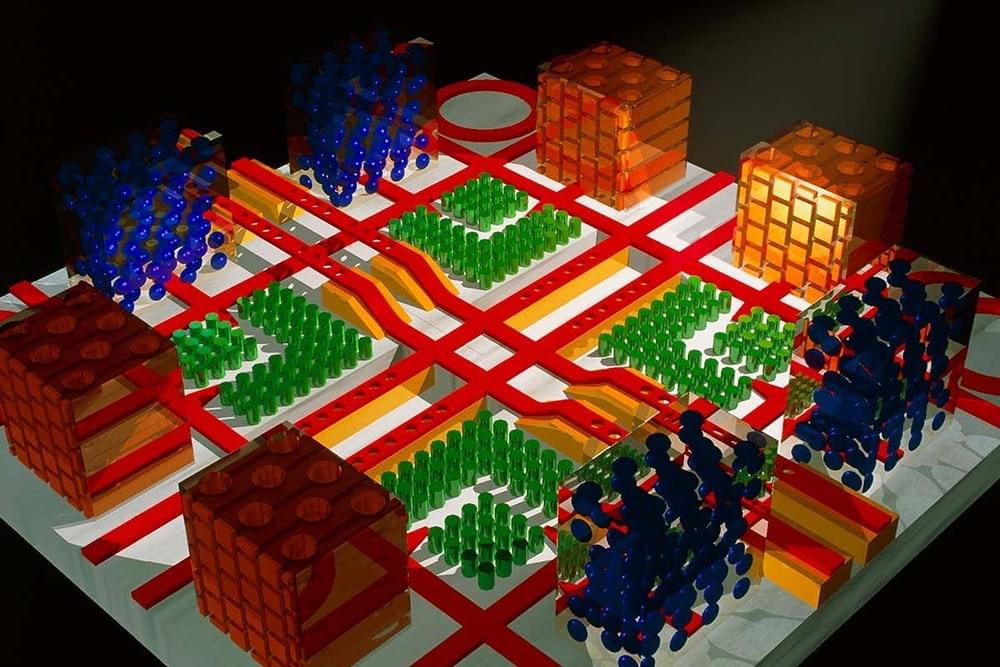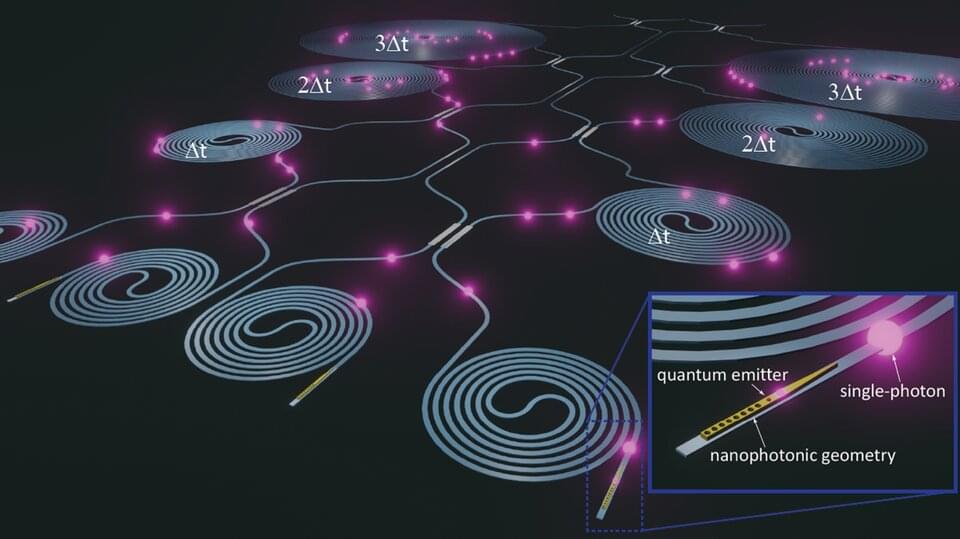A chip-sized device can produce very intense light that could help in building tiny X-ray machines and particle accelerators.



Nothing personal, the Sun is just going through a phase right now.
On Jan 4, 2023, our planet reached the closest point to the Sun in its orbit and is expected to be hit by the wake of a coronal mass ejection (CME) coming from the Sun, Live Science.
A coronal mass ejection is a large expulsion of plasma and magnetic field from the solar surface. When the particles in this expulsion and the magnetic field interact with the Earth’s atmosphere and magnetic field, it compresses the latter, which is referred to as a geomagnetic storm.

The so-called “Father of the Atomic Bomb” J. Robert Oppenheimer was once described as “a genius of the nuclear age and also the walking, talking conscience of science and civilization”. Born at the outset of the 20th century, his early interests in chemistry and physics would in the 1920s bring him to Göttingen University, where he worked alongside his doctoral supervisor Max Born (1882−1970), close lifelong friend Paul Dirac (1902−84) and eventual adversary Werner Heisenberg (1901−76). This despite the fact that even as early as in his youth, Oppenheimer was singled out as both gifted and odd, at times even unstable. As a child he collected rocks, wrote poetry and studied French literature. Never weighing more than 130 pounds, throughout his life he was a “tall and thin chainsmoker” who once stated that he “needed physics more than friends” who at Cambridge University was nearly charged with attempted murder after leaving a poisoned apple on the desk of one of his tutors. Notoriously abrupt and impatient, at Göttingen his classmates once gave their professor Born an ultimatum: “either the ‘child prodigy’ is reigned in, or his fellow students will boycott the class”. Following the successful defense of his doctoral dissertation, the professor administering the examination, Nobel Laureate James Franck (1882−1964) reportedly left the room stating.
“I’m glad that’s over. He was at the point of questioning me”
From his time as student at Harvard, to becoming a postgraduate researcher in Cambridge and Göttingen, a professor at UC Berkeley, the scientific head of the Manhattan project and after the war, the Director of the Institute for Advanced Study, wherever Oppenheimer went he could hold his own with the greatest minds of his age. Max Born, Paul Dirac, John von Neumann, Niels Bohr, Albert Einstein, Kurt Gödel, Richard Feynman, they all admired “Oppie”. When he died in 1967, his published articles in physics totaled 73, ranging from topics in quantum field theory, particle physics, the theory of cosmic radiations to nuclear physics and cosmology. His funeral was attended by over 600 people, and included numerous associates from academia and research as well as government officials, heads of military, even the director of the New York City Ballet.

Although dark matter is a central part of the standard cosmological model, it’s not without its issues. There continue to be nagging mysteries about the stuff, not the least of which is the fact that scientists have found no direct particle evidence of it. Despite numerous searches, we have yet to detect dark matter particles. So some astronomers favor an alternative, such as Modified Newtonian Dynamics (MoND) or modified gravity model. And a new study of galactic rotation seems to support them.
The idea of MoND was inspired by galactic rotation. Most of the visible matter in a galaxy is clustered in the middle, so you’d expect that stars closer to the center would have faster orbital speeds than stars farther away, similar to the planets of our solar system. We observe that stars in a galaxy all rotate at about the same speed. The rotation curve is essentially flat rather than dropping off. The dark matter solution is that galaxies are surrounded by a halo of invisible matter, but in 1983 Mordehai Milgrom argued that our gravitational model must be wrong.


Quantum Hylomorphism
What is most original in Koons’s book is his argument that quantum mechanics is best interpreted as vindicating the Aristotelian hylomorphist’s view of nature. To be sure, there have been others who have made such claims, not the least of them being Werner Heisenberg, one of the fathers of modern quantum physics. But Koons is the first prominent philosopher to make the case at book-length, in a way that combines expertise in the relevant philosophical ideas and literature with serious and detailed engagement with the scientific concepts. Future work on hylomorphism and the philosophy of quantum mechanics will have to take account of his arguments.
As Koons notes, there are several aspects of quantum mechanics that lend themselves to an Aristotelian interpretation. For example, there is Heisenberg’s famous principle that the position and momentum of a particle are indeterminate apart from interaction with a system at the middle-range level of everyday objects (such as an observer). There is physicist Richard Feynman’s “sum over histories” method, in which predictions must take account of every possible path a particle might take, not just its actual path. There are “entanglement” phenomena, in which the properties of a system of particles are irreducible to the particles considered individually or their spatial relations and relative velocity. There is quantum statistics, in which particles of the same kind are treated as fused and losing their individuality within a larger system.

Year 2020 o.o!
Explorations into the nature of reality have been undertaken across the ages, and in the contemporary world, disparate tools, from gedanken experiments [1–4], experimental consistency checks [5,6] to machine learning and artificial intelligence are being used to illuminate the fundamental layers of reality [7]. A theory of everything, a grand unified theory of physics and nature, has been elusive for the world of Physics. While unifying various forces and interactions in nature, starting from the unification of electricity and magnetism in James Clerk Maxwell’s seminal work A Treatise on Electricity and Magnetism [8] to the electroweak unification by Weinberg-Salam-Glashow [9–11] and research in the direction of establishing the Standard Model including the QCD sector by Murray Gell-Mann and Richard Feynman [12,13], has seen developments in a slow but surefooted manner, we now have a few candidate theories of everything, primary among which is String Theory [14]. Unfortunately, we are still some way off from establishing various areas of the theory in an empirical manner. Chief among this is the concept of supersymmetry [15], which is an important part of String Theory. There were no evidences found for supersymmetry in the first run of the Large Hadron Collider [16]. When the Large Hadron Collider discovered the Higgs Boson in 2011-12 [17–19], there were results that were problematic for the Minimum Supersymmetric Model (MSSM), since the value of the mass of the Higgs Boson at 125 GeV is relatively large for the model and could only be attained with large radiative loop corrections from top squarks that many theoreticians considered to be ‘unnatural’ [20]. In the absence of experiments that can test certain frontiers of Physics, particularly due to energy constraints particularly at the smallest of scales, the importance of simulations and computational research cannot be underplayed. Gone are the days when Isaac Newton purportedly could sit below an apple tree and infer the concept of classical gravity from an apple that had fallen on his head. In today’s age, we have increasing levels of computational inputs and power that factor in when considering avenues of new research in Physics. For instance, M-Theory, introduced by Edward Witten in 1995 [21], is a promising approach to a unified model of Physics that includes quantum gravity. It extends the formalism of String Theory. There have been computational tools relating to machine learning that have lately been used for solving M-Theory geometries [22]. TensorFlow, a computing platform normally used for machine learning, helped in finding 194 equilibrium solutions for one particular type of M-Theory spacetime geometries [23–25].
Artificial intelligence has been one of the primary areas of interest in computational pursuits around Physics research. In 2020, Matsubara Takashi (Osaka University) and Yaguchi Takaharu (Kobe University), along with their research group, were successful in developing technology that could simulate phenomena for which we do not have the detailed formula or mechanism, using artificial intelligence [26]. The underlying step here is the creation of a model from observational data, constrained by the model being consistent and faithful to the laws of Physics. In this pursuit, the researchers utilized digital calculus as well as geometrical approach, such as those of Riemannian geometry and symplectic geometry.

The ability to transmit and manipulate, with minimal loss, the smallest unit of light—the photon—plays a pivotal role in optical communications as well as designs for quantum computers that would use light rather than electric charges to store and carry information.
Now, researchers at the National Institute of Standards and Technology (NIST) and their colleagues have connected, on a single microchip, quantum dots—artificial atoms that generate individual photons rapidly and on-demand when illuminated by a laser—with miniature circuits that can guide the light without significant loss of intensity.
To create the ultra-low-loss circuits, the researchers fabricated silicon-nitride waveguides—the channels through which the photons traveled—and buried them in silicon dioxide. The channels were wide but shallow, a geometry that reduced the likelihood that photons would scatter out of the waveguides. Encapsulating the waveguides in silicon dioxide also helped to reduce scattering.

Pity the poor astronomer. Biologists can hold examples of life in their hands. Geologists can fill specimen cabinets with rocks. Even physicists get to probe subatomic particles in laboratories built here on Earth. But across its millennia-long history, astronomy has always been a science of separation. No astronomer has stood on the shores of an alien exoplanet orbiting a distant star or viewed an interstellar nebula up close. Other than a few captured light waves crossing the great void, astronomers have never had intimate access to the environments that spur their passion.
Until recently, that is. At the turn of the 21st century, astrophysicists opened a new and unexpected era for themselves: large-scale laboratory experimentation. High-powered machines, in particular some very large lasers, have provided ways to re-create the cosmos, allowing scientists like myself to explore some of the universe’s most dramatic environments in contained, controlled settings. Researchers have learned to explode mini supernovas in their labs, reproduce environments around newborn stars, and even probe the hearts of massive and potentially habitable exoplanets.
How we got here is one of the great stories of science and synergy. The emergence of this new large-scale lab-based astrophysics was an unanticipated side effect of a much broader, more fraught, and now quite in-the-news scientific journey: the quest for nuclear fusion. As humanity has worked to capture the energy of the stars, we’ve also found a way to bring the stars down to Earth.
Water on the Moon has been a hot topic in the research world lately. Since its first unambiguous discovery back in 2008. Since then, findings of it have ramped up, with relatively high concentration levels being discovered, especially near the polar regions, particularly in areas constantly shrouded in shadow. Chang’e 5, China’s recent sample return mission, didn’t land in one of those permanently shadowed areas. Still, it did return soil samples that were at a much higher latitude than any that had been previously collected. Now, a new study shows that those soil samples contain water and that the Sun’s solar wind directly impacted that water.
The amount of water on the lunar surface varies widely both based on the time of the lunar day and the latitude it is located at. There is so much variability that the water content of the lunar soil can be 200 ppm higher or lower at different times of the day. With that much variability, it seems clear that the Sun plays a significant role in the hydrological cycle there is on the Moon.
Part of that role is controlling the type of hydrogen embedded into the lunar soil. Since the Moon has almost no atmosphere to speak of, the charged hydrogen particles that make up the solar wind can directly interact with the top regolith layer on the lunar surface. When they do so, they leave behind a distinct sign that they do – a large amount of hydrogen atoms with very little deuterium.